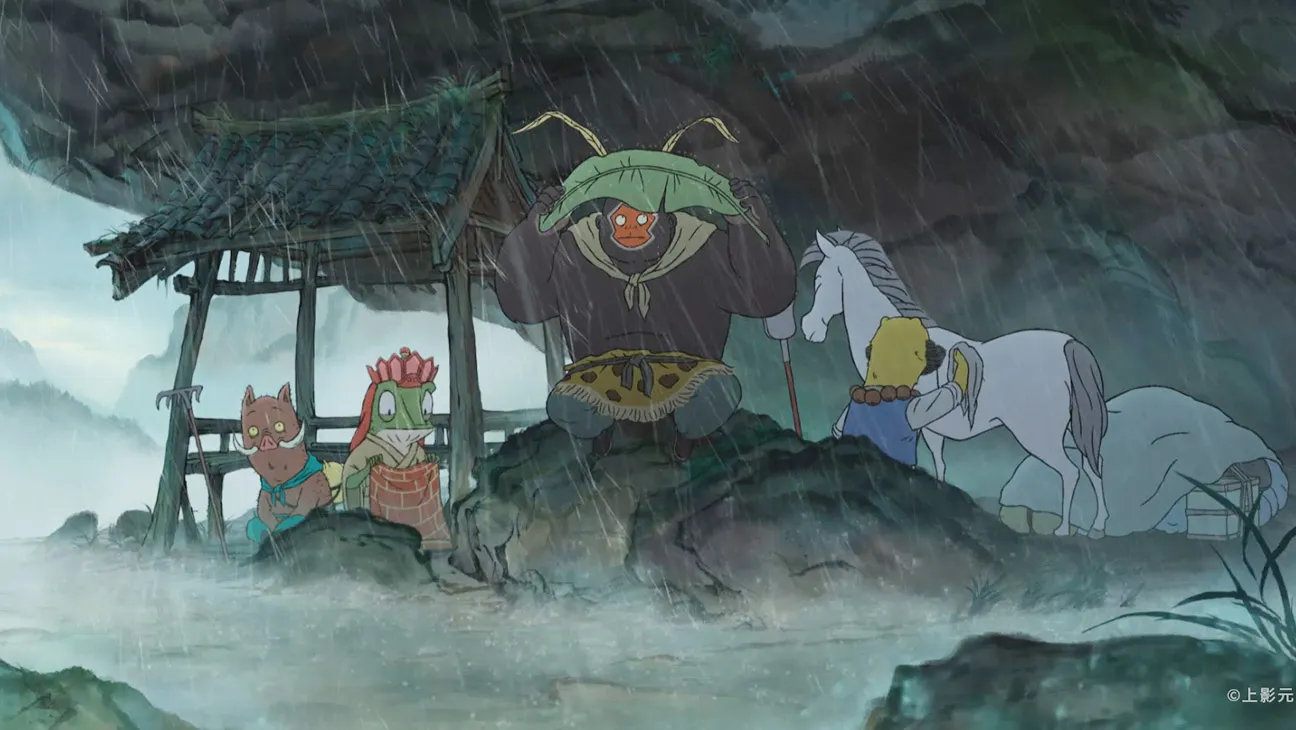Copyright The Hollywood Reporter

Animation has been among the key drivers of the Chinese film industry’s rapid development over the past two decades, and the past 12 months have showcased just how far this art form has come in the country. Obviously much of the noise has been centered about the stunning box office success of Beijing Enlight Pictures’ Ne Zha 2, the tale of the plucky little demon boy that is now the world’s biggest animated hit of all time, surpassing Pixar’s Inside Out 2 with estimated box office of more than $2.2 billion globally. Both domestic and global audiences warmed to its blend of action and humor, but behind the headlines focussed on Ne Zha 2 there have been other successes across 2025 that showcase the creative reach of contemporary Chinese animation. These have included Boonie Bears: Future Reborn ($102 million in global box office) — the latest installment of an 11-film child-friendly franchise that has now grossed $1.2 billion — and the Shanghai Animation Film Studio-produced Nobody, which took in an estimated $153 million at the domestic box office. Nobody uses a story based on the ancient — and perennially popular — text Journey to the West (first published around 16th century) and it taps into traditional Chinese ink-wash style of painting styles but also aligns “closely with today’s aesthetic expectations,” according to Chen Liaoyu, the film’s art director and executive producer. “Chinese animation has continued to grow and evolve,” explains Chen. “While earlier stages of development prioritized quantity, the past decade has marked a transition toward quality. A new generation of animation creators has reached a stage of creative maturity, and a new, broader audience is emerging.” Adds Chen: “The era when animation was seen solely as children’s entertainment is long over. Today’s Chinese animation creators are consciously exploring the cultural heritage and spiritual essence of Chinese identity, while also striving to create works with universal appeal.” Nobody follows four seemingly lower-level demons (or “nobodies”) — taking the form of a boar, a toad, a weasel and a gorilla — who decide to disguise themselves as the main characters from Journey to the West, and to also go on a quest that hopefully leads to them gaining immortality. The film will be featured on Oct. 29 at TIFFCOM as part of the Chinese Film Screenings program hosted by the China Film Co-Production Corporation (CFCC) and the Takeshiba Media Studio, Imagica Entertainment Media Services and designed, organizers said, to allow “international filmmakers to have a deeper understanding of the production standard of Chinese films.” Also screened were the time-jumping comedyThe Adventure and the space-set documentary Shenzhou 13. This year’s TIFFCOM has, meanwhile, marked the first appearance of the China Film Pavilion. Under the guidance of the China Film Administration, the CFCC has gathered together more than 60 Chinese film companies, among them the China Film Group Corporation, CMC Pictures, Bona Film Group, Fantawild Animation, the China Film Archive and the Shanghai International Film Festival. The pavilion has also featured around 180 recent Chinese productions, notably the likes of The Volunteers: To the War 3, A Tapestry of a Legendary Land, The Shadow’s Edge and Curious Tales of a Temple. The message being shared was that the Chinese film industry is on the rise, with box office to Oct. 8 reaching $6.1 billion, an increase of 18.98 percent, year-on-year, and already more $181 million more than all of 2024. The number of moviegoers across the country has also been on the rise, reaching 1.035 billion, an increase of 19.39 percent, year-on-year, and topping the total number of moviegoers in 2024 by 25.28 million, according to the CFCC. Other initiatives at TIFFCOM this week include the CFCC-hosted China Film Promotion, on Oct. 30, which will give the makers of such hits as A Tapestry of a Legendary Land, Shenzhou 13, I’m Bond, GG Bond and Pleasant Goat and Big Big Wolf: The World Guardians the opportunity to introduce their productions to an audience of international industry reps. On Oct. 31, the CFCC — in collaboration with the Institute of Film, Television and Theatre, Peking University and International Institute of Film and Television Development, Zhejiang University — will co-host the “Launch event of the Blue Book of China Film 2025 and the Blue Book of China TV Series 2025.” Professor Xuguang Chen from Peking University and professor Zhizhong Fan from Zhejiang University are set to take the audience through these two reports and on a deep dive into the “latest achievements of China’s film and television industry.” The CFCC says bringing the China Film Pavilion to Tokyo is designed “to deepen international film transactions, foster Sino-foreign cinematic collaboration and enhance mutual cultural appreciation within the global film industry.” “Looking ahead, the China Film Pavilion is committed to broadening international exchange and cooperation, facilitating the integration of domestic film companies and Chinese films into the global cinematic landscape,” the spokesperson said. Productions such as Nobody are being positioned at the forefront of this push and much has been made across Chinese media over this past 12 months about both its box office — and its style. “As a story inspired by Journey to the West and infused with strong elements of local realism, adopting a style rooted in traditional Chinese aesthetics was a natural choice,” says Chen. “At the same time, as an animated feature film created for contemporary audiences, we built upon those traditional influences by integrating modern cinematic concepts of space, lighting and color. This allowed the film to enhance its expressive power, [and to] better serve narrative and emotional needs.” China’s film industry leaders over the past 12 months have gone public with their desire to see the industry diversify in order to reach a contemporary audience that is spoiled for choice when it comes to content. Chen believes Nobody’s success can also be pinned on the fact that the central themes of their story — underdogs overcoming adversity — speaks to the here and now. “At its core, our aim was to tell an engaging story — one whose metaphors and themes deeply resonate with modern audiences,” says Chen. “We hope that every viewer can recognize themselves or someone they know within the film. Through this story, we not only reflect certain truths about life but also provide comfort and hope.” Chen adds that while the technical wizardry in the film is impressive, it doesn’t exist just for its own sake. “Everything we do in terms of form — whether visual design, pacing or performance — is always in service of storytelling, character building and emotional expression, rather than simply showcasing technical skill or visual effects. We see this approach as a gesture of respect toward both the art of cinema and our audience.” Increasingly, Chinese filmmakers are looking beyond the domestic market with storytelling that Chen says has the potential for global appeal: “Although the story is rooted in the Chinese literary classic Journey to the West, it is, above all, a story about ordinary people. It is not a tale of traditional heroism, but one of self-awareness and staying true to one’s inner self. Most importantly, it is a film filled with humor and joy from beginning to end — a story that anyone, regardless of age or background, can enjoy.”



